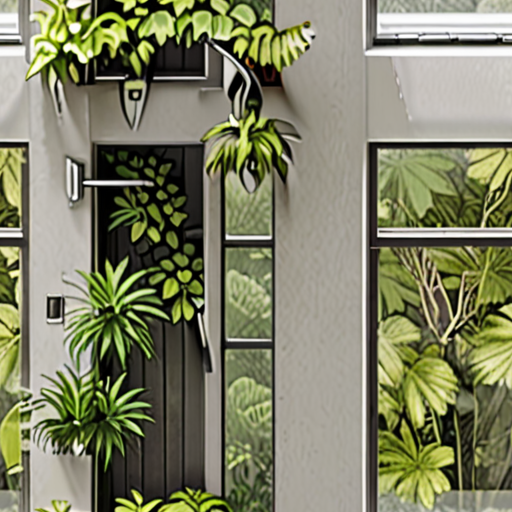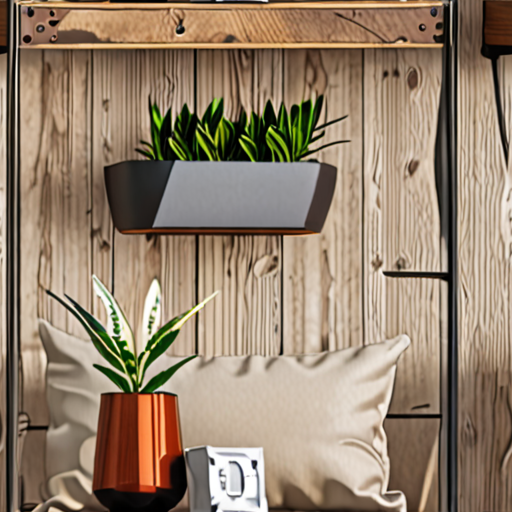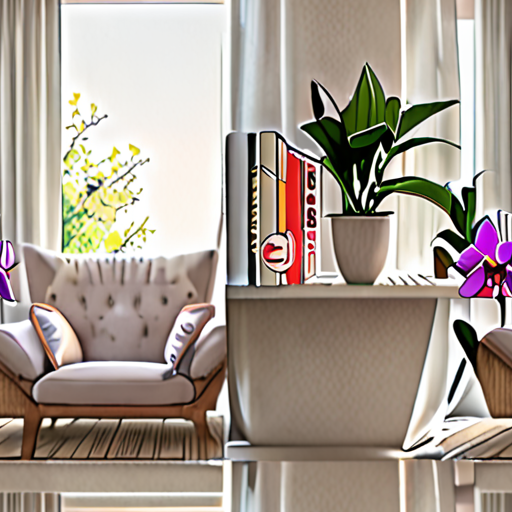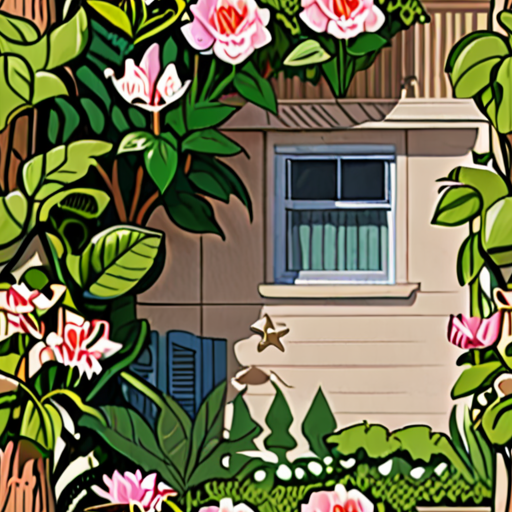Living in a small space can be both a blessing and a curse. On one hand, it forces us to be creative and resourceful when it comes to utilizing every inch of our homes. On the other hand, it can lead to feelings of claustrophobia and disorganization if we’re not careful. But what if we told you that there are ways to transform your small space into a functional masterpiece? By maximizing vertical space, creating efficient layouts, and incorporating clever storage solutions, you can turn even the tiniest of rooms into a haven that feels spacious and inviting.

Maximizing Space in a Small House
I’ve lived in small spaces before, and I can attest that it requires some creativity and resourcefulness to make the most out of it.
- Assess Your Space
- Determine what you need to store and how much space you have available.
- Measure your furniture and walls to get an idea of the layout.
- Consider multi-functional furniture pieces that serve more than one purpose.
Optimize Your Furniture
- Choose compact or wall-mounted furniture to save floor space.
- Invest in storage ottomans or coffee tables with built-in storage.
- Use vertical space by installing shelves or hooks for hanging items.
- Consider a Murphy bed or sofa bed to free up floor space during the day.
Utilize Hidden Storage
- Install hidden compartments or secret storage in furniture pieces.
- Use under-bed storage containers or bins to keep clutter out of sight.
- Take advantage of closet organizers and maximize your closet space.
- Hang curtains or dividers to separate areas and conceal clutter.
Streamline Your Belongings
- Purge unnecessary items and donate or sell them.
- Keep only essential items and consider a minimalist approach.
- Label and categorize items to maintain organization and easy access.
- Implement a “one in, one out” policy to prevent clutter buildup.
Get Creative with Lighting
- Use string lights or fairy lights to add ambiance without taking up space.
- Install recessed lighting or track lighting to illuminate dark areas.
- Utilize mirrors to reflect light and create the illusion of more space.
- Choose multi-functional lamps that serve as both lighting and decorative pieces.
Make the Most of Natural Light
- Keep windows unobstructed to allow natural light to enter.
- Use sheer curtains or blinds to filter sunlight and reduce glare.
- Position furniture near windows to take advantage of natural light.
- Consider skylights or solar tubes to bring in natural light from above.
Make a Small Space Look Expensive
To give a small space an upscale feel, consider incorporating luxurious textures, rich colors, and statement pieces.
- Invest in Quality Furniture: Choose timeless, high-end designs that exude sophistication, such as velvet sofas or marble-topped coffee tables.
- Add Metallic Accents: Incorporate metallic finishes like gold, silver, or copper through lighting fixtures, vases, or picture frames to add a touch of glamour.
- Incorporate Greenery: Bring in lush greenery, such as potted plants or a living wall, to add a pop of color and freshness to the space.
- Select High-Quality Lighting: Install dimmable LED lights or chandeliers to create ambiance and highlight architectural features.
- Utilize Mirrors: Hang large mirrors strategically to create the illusion of a larger space and reflect light, making the area appear more spacious.
- Choose Luxurious Textiles: Incorporate plush throw blankets, sumptuous rugs, and elegant window treatments to add warmth and texture to the space.
- Display Artwork and Collectibles: Showcase statement pieces, such as sculptures or paintings, to add visual interest and personality to the space.
- Optimize Storage: Invest in sleek, modern storage solutions, like minimalist shelving units or hidden compartments, to keep clutter at bay and maintain a sense of openness.
- Consider Multifunctional Pieces: Select furniture and decor that serves multiple purposes, such as a storage ottoman or a desk with built-in shelving, to maximize functionality and minimize clutter.
- Edit and Curate: Be selective when choosing decorative items and edit your collection regularly to maintain a cohesive, polished look.
By implementing these strategies, you can transform a small space into a luxurious retreat that feels expansive and inviting.

Maximizing Small Living Spaces
I’ve lived in tiny apartments and cozy cottages, and I can confidently say that making the most of small living spaces requires a combination of clever design, smart storage solutions, and a willingness to get creative.
- Assess Your Space
- Prioritize Functionality
- Optimize Your Layout
- Make the Most of Vertical Space
- Invest in Smart Storage Solutions
- Bring in Natural Light
- Choose Multi-Functional Decor
- Consider Compact Appliances
- Don’t Forget About Outdoor Space
Before we dive into the nitty-gritty of maximizing your space, take some time to assess what you’re working with. Measure your rooms, note the layout, and identify any potential challenges or opportunities.
When it comes to small living spaces, functionality is key. Consider multi-functional furniture pieces, like a sofa bed or a desk with built-in storage, to help keep clutter at bay.
A well-designed layout can make all the difference in a small space. Think about traffic flow, and consider using a “zone” approach to separate different areas of your home.
Vertical space is often underutilized in small homes, but it’s a great opportunity to add some visual interest and extra storage. Use floor-to-ceiling shelves, hanging organizers, or wall-mounted storage units to maximize your ceiling height.
Storage is essential in small living spaces, and there are plenty of clever solutions available. Look for compact storage units, like ottomans or storage cubes, to help keep clutter hidden.
Natural light can make even the smallest space feel larger and more welcoming. Make the most of your windows by using sheer curtains, mirrors, or skylights to reflect and amplify the light.
Decorating a small space can be challenging, but choosing multi-functional pieces can help simplify the process. Opt for decorative items that serve a purpose, like a vase that doubles as a planter or a coffee table with built-in storage.
If you’re short on kitchen space, consider investing in compact appliances, like a toaster oven or a microwave. These can help reduce clutter and make meal prep easier.
Even if you don’t have a large backyard, outdoor space can still be a valuable asset. Consider investing in a balcony or patio set, or look for ways to repurpose your outdoor area, like turning a small courtyard into a garden.
By implementing these strategies, you’ll be well on your way to maximizing your small living space and creating a comfortable, functional home that feels just right.

Coping with Living in a Small Space
I’ve lived in small apartments before, and I can attest that it requires some adjustments.
- Assess Your Needs
- Start by evaluating what you need versus what you want. Make a list of essential items, such as clothing, kitchenware, and bedding, and consider how often you use them.
- This will help you determine what to keep and what to let go of, making the most of your limited space.
Optimize Your Layout
Think vertically and horizontally to maximize storage and functionality.
- Utilize Wall Space
- Install shelves, hooks, and baskets to store items like books, bags, and cleaning supplies.
- This keeps floors and surfaces clutter-free and creates a sense of openness.
Choose Multi-Functional Furniture
Select pieces that serve multiple purposes, such as a storage ottoman or a desk with built-in shelving.
- Streamline Your Belongings
- Purge unnecessary items and donate or recycle them whenever possible.
- This helps maintain a sense of calm and reduces visual clutter.
Make the Most of Your Kitchen
A well-designed kitchen can make a big difference in a small space.
- Invest in Compact Appliances
- Look for smaller versions of your favorite appliances, such as a toaster oven or a microwave.
- This saves counter space and makes meal prep easier.
Maximize Storage in the Bathroom
Use wall-mounted cabinets, shelves, and hooks to keep toiletries and towels organized.
- Consider Vertical Gardening
- Grow herbs, succulents, or other low-maintenance plants on a trellis or a wall-mounted planter.
- This adds a touch of greenery to your space and purifies the air.
Embrace Minimalism
Living in a small space encourages simplicity and intentionality.
- Focus on Experiences Over Possessions
- Spend money on experiences, like travel or hobbies, rather than accumulating material possessions.
- This fosters a sense of fulfillment and happiness.
Find Community
Connect with neighbors, join local groups, or participate in online forums to build relationships and find support.
- Maintain a Healthy Work-Life Balance
- Set boundaries between work and personal life to prevent burnout and maintain productivity.
- This ensures you stay energized and motivated in your small space.
The Psychological Effects of Living in a Small Space
When I live in a small space, I often feel confined or trapped, which can lead to feelings of anxiety and stress.
- I may start to feel isolated and disconnected from the world outside my tiny abode.
- This isolation can exacerbate feelings of loneliness and disconnection.
- On the other hand, living in a crowded and tight space can also have negative effects, such as feeling overwhelmed and anxious.
- I may find myself constantly interrupted by the sounds and activities happening around me.
Common Psychological Effects of Living in a Small Space
Some common psychological effects of living in a small space include:
- Anxiety and Stress: The feeling of being confined or trapped can cause anxiety and stress, which can negatively impact mental health.
- Isolation and Loneliness: Living in a small space can lead to feelings of isolation and loneliness, particularly if you’re not making an effort to connect with others.
- Overwhelm and Anxiety: A crowded and tight space can be overwhelming, leading to increased anxiety levels.
- Distractibility: Constant interruptions from external stimuli can make it difficult to focus and concentrate.
Strategies for Coping with the Psychological Effects of Living in a Small Space
To mitigate the negative psychological effects of living in a small space, try these strategies:
- Create a Comfortable Environment: Make your small space comfortable and inviting by adding plants, artwork, and cozy textiles.
- Establish a Routine: Establish a daily routine that includes time for self-care, exercise, and socializing to combat feelings of isolation.
- Practice Mindfulness: Practice mindfulness techniques, such as meditation and deep breathing, to reduce stress and anxiety.
- Connect with Others: Make an effort to connect with friends, family, and community members to combat feelings of loneliness.
Conclusion
While living in a small space can have its challenges, there are ways to mitigate the negative psychological effects.

Minimum Space Needed for Comfortable Living
The ideal living space varies greatly depending on individual preferences, lifestyle, and location.
- A general guideline suggests that a minimum of 200-400 square feet is required for a comfortable living space.
- This typically includes a bedroom, living area, bathroom, and kitchenette.
- However, factors such as climate, cultural background, and personal habits can influence the actual space needed.
- In colder climates, people may require more space to accommodate heating systems and insulation.
- On the other hand, those living in warmer climates might prefer larger outdoor spaces.
Factors Influencing Minimum Space Requirements
- Cultural Background:
- Some cultures place great emphasis on communal living, requiring less private space.
- Others prioritize individualism, necessitating more personal space.
- Lifestyle:
- People with busy lifestyles may require more space for relaxation and entertainment.
- Those with simpler lifestyles might need less space.
- Location:
- Urban areas often have smaller living spaces due to high land costs and population density.
- Rural areas tend to have larger living spaces due to lower land costs and more available space.
Optimizing Space for Comfort
- Multifunctional Furniture:
- Investing in multifunctional furniture can help maximize space.
- Examples include sofa beds, storage ottomans, and Murphy desks.
- Vertical Space:
- Utilize vertical space by installing shelves, hooks, and storage units.
- This helps keep floors and surfaces clutter-free.
- Minimal Decor:
- Avoid clutter and excessive decor to create a sense of openness.
- Choose minimalist designs that promote a clean and airy feel.
Conclusion
The minimum space needed for comfortable living varies greatly depending on individual circumstances.
By considering factors such as cultural background, lifestyle, and location, individuals can determine their optimal living space requirements.
Optimizing space through multifunctional furniture, vertical storage, and minimal decor can also contribute to a more comfortable living environment.

0 Comments